Our clients can avail from us a comprehensive range of Stainless SteelPlates that are manufactured in line with the prevailing industry standards. These plates can be availed in different grades like austenitic, duplex, martensitic and ferritic. Furthermore, the stainless steel plates offered by us can be provided in 3 mm to 100 mm thickness and 1000 mm to 3200 mm width. The length of these plates can be custom-made in 2438 mm/3048 mm/6096 mm and 13500 mm.
Features:
- Grades: Austenitic, Duplex, Martensitic, Ferritic
- Surface: No.1 Finished
- Thickness: 3 mm to 100 mm
- Width: 1000 mm to 3200mm
- Length: 2438 mm / 3048 mm / 6096 mm to 13500 mm
- All Grades : Austenitic, Duplex, Martensitic, Ferritic
- Special grades : 310S, 309S, 317L, 904L, Duplex 2005, 230
- Stainless Steel Plates Prime Materials - ASTM A240/ASME SA 240, NACE MR 01 - 75, EN 10204 3.1
- Coil, Sheet and plate dimension (in mm)
304 Stainless Steel Plates
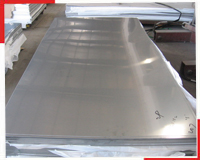 Steel Grade 304 / 304L | UNS S30400 / UNS S30403 | 1.4301 / 1.4307 Steel Grade 304 / 304L | UNS S30400 / UNS S30403 | 1.4301 / 1.4307
These types of steel are some of the most regularly specified and have come to represent the embodiment of the basic stainless product. They are part of the 300 Series of steels (as defined in SAE specifications) which covers a range of austenitic chromium-nickel alloys. They are also known as 18/8 stainless due to their chemical composition which includes approximately 18% chromium and 8% nickel by weight. The steels are easy to form, weld, and fabricate and their resistance to corrosion from, amongst other things, acids naturally contained in food has resulted in them being used widely in the food and drink processing industries.
Type 304 and Type 304L have very similar chemical and mechanical properties and are often included on a single material test certificate when the actual properties of a stainless steel plate meet the criteria of both types. This is a very common occurrence. Type 304L is a variation of Type 304 and has a lower carbon content which improves weldability and lowers the risk of reduced corrosion resistance around the weld. Type 304L also has a slightly lower yield and tensile strength than Type 304.
As with most steel plate products a number of different designations are used for these steels. The most common are:
- Type 304 1.4301 (EN Steel Number) S30400 (UNS)
- Type 304L1.4307 (EN Steel Number)S30403 (UNS)
304 / 304L Stainless Steel Properties:
Typical chemical and mechanical properties of Type 304 and Type 304L stainless steel:
| |
Chemical Analysis (%) |
PREN |
Mechanical Properties |
|
| |
C |
Cr |
Ni |
Mo |
|
Proof Stress |
Tensile |
Elongation |
| 304 |
.08 |
18.5 |
9 |
- |
19 |
235 |
530-730 |
40 |
| 304L |
.03 |
18.5 |
9 |
- |
19 |
200 |
500-700 |
40 |
Typical industrial sectors:
- Food Processing
- Chemical Industry
- Brewing
- Pharmaceuticals
- Petrochemicals
Typical product applications:
- Heat Exchanger
- Pipelines
- Pressure Vessels
- Flanges and fittings
- Valves
- Condensers.
304L Stainless Steel Plates
Steel Grade 304 / 304L | UNS S30400 / UNS S30403 | 1.4301 / 1.4307
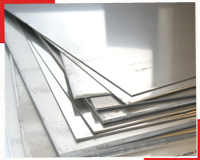 These types of steel are some of the most regularly specified and have come to represent the embodiment of the basic stainless product. They are part of the 300 Series of steels (as defined in SAE specifications) which covers a range of austenitic chromium-nickel alloys. They are also known as 18/8 stainless due to their chemical composition which includes approximately 18% chromium and 8% nickel by weight. The steels are easy to form, weld, and fabricate and their resistance to corrosion from, amongst other things, acids naturally contained in food has resulted in them being used widely in the food and drink processing industries. These types of steel are some of the most regularly specified and have come to represent the embodiment of the basic stainless product. They are part of the 300 Series of steels (as defined in SAE specifications) which covers a range of austenitic chromium-nickel alloys. They are also known as 18/8 stainless due to their chemical composition which includes approximately 18% chromium and 8% nickel by weight. The steels are easy to form, weld, and fabricate and their resistance to corrosion from, amongst other things, acids naturally contained in food has resulted in them being used widely in the food and drink processing industries.
Type 304 and Type 304L have very similar chemical and mechanical properties and are often included on a single material test certificate when the actual properties of a stainless steel plate meet the criteria of both types. This is a very common occurrence. Type 304L is a variation of Type 304 and has a lower carbon content which improves weldability and lowers the risk of reduced corrosion resistance around the weld. Type 304L also has a slightly lower yield and tensile strength than Type 304.
As with most steel plate products a number of different designations are used for these steels. The most common are:
Type 304 1.4301 (EN Steel Number) S30400 (UNS)
Type 304L1.4307 (EN Steel Number)S30403 (UNS)
304 / 304L Stainless Steel Properties:
Typical chemical and mechanical properties of Type 304 and Type 304L stainless steel:
|
|
Chemical Analysis (%) |
PREN |
Mechanical Properties |
|
|
C |
Cr |
Ni |
Mo |
|
Proof Stress |
Tensile |
Elongation |
347 |
.08 |
17 |
11.5 |
- |
24 |
255 |
550-700 |
40 |
347L |
.03 |
17 |
11.5 |
- |
24 |
220 |
520-670 |
40 |
Typical industrial sectors:
- Food Processing
- Chemical Industry
- Brewing
- Pharmaceuticals
- Petrochemicals
Typical product applications:
- Heat Exchangers
- Pipelines
- Pressure Vessels
- Flanges and fittings
- Valves
- Condensers
316 Stainless Steel Plates
Grade 316 / 316L | UNS S31600 / UNS S31603 | 1.4401 / 1.4404
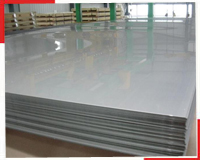 These steels are the second most regularly specified stainless steels after Type 304 and are part of the SAE defined 300 Series which encompasses a range of austenitic chromium-nickel alloys. Austenitic stainless steels like Type 316 are widely available, have good general corrosion resistance, good cryogenic toughness, and excellent formability and weldability. These steels are the second most regularly specified stainless steels after Type 304 and are part of the SAE defined 300 Series which encompasses a range of austenitic chromium-nickel alloys. Austenitic stainless steels like Type 316 are widely available, have good general corrosion resistance, good cryogenic toughness, and excellent formability and weldability.
Type 316 has 2-3% Molybdenum included in its chemical composition which prevents specific forms of corrosion and generally enhances its corrosion resistance. Type 316 is often referred to as “marine grade” stainless due to its increased resistance to chloride corrosion compared to Type 304 making it a very suitable material for use in salt water environments.
Type 316L is a variant of Type 316 and differs by having a lower Carbon content as well as slightly lower yield and tensile strengths. Type 316L offers improved weldability and also reduces the possibility of lower corrosion resistance around welded areas.
As with most steel plate products a number of different designations are used for these steels. The most common are:
Type 316 1.4401 (EN Steel Number) S31600 (UNS)
Type 316L1.4404 (EN Steel Number) S31603 (UNS)
316 / 316L Stainless Steel Properties:
Typical chemical and mechanical properties of Type 316 and Type 316L steel:
|
|
Chemical Analysis (%) |
PREN |
Mechanical Properties |
|
|
C |
Cr |
Ni |
Mo |
|
Proof Stress |
Tensile |
Elongation |
316 |
.08 |
17 |
11.5 |
- |
24 |
255 |
550-700 |
40 |
316L |
.03 |
17 |
11.5 |
- |
24 |
220 |
520-670 |
40 |
Typical industrial sectors:
- Brewing
- Chemical Industry
- Dairy
- Food processing
- Marine equipment
- Petrochemicals
- Pharmaceuticals
Typical product applications:
- Condensers
- Heat Exchangers
- Filters
- Pressure Vessels
- Valves
- Flanges &Fittings
316L Stainless Steel Plates
Grade 316 / 316L | UNS S31600 / UNS S31603 | 1.4401 / 1.4404
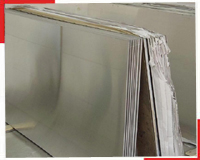 These steels are the second most regularly specified stainless steels after Type 304 and are part of the SAE defined 300 Series which encompasses a range of austenitic chromium-nickel alloys. Austenitic stainless steels like Type 316 are widely available, have good general corrosion resistance, good cryogenic toughness, and excellent formability and weldability. These steels are the second most regularly specified stainless steels after Type 304 and are part of the SAE defined 300 Series which encompasses a range of austenitic chromium-nickel alloys. Austenitic stainless steels like Type 316 are widely available, have good general corrosion resistance, good cryogenic toughness, and excellent formability and weldability.
Type 316 has 2-3% Molybdenum included in its chemical composition which prevents specific forms of corrosion and generally enhances its corrosion resistance. Type 316 is often referred to as “marine grade” stainless due to its increased resistance to chloride corrosion compared to Type 304 making it a very suitable material for use in salt water environments.
Type 316L is a variant of Type 316 and differs by having a lower Carbon content as well as slightly lower yield and tensile strengths. Type 316L offers improved weldability and also reduces the possibility of lower corrosion resistance around welded areas.
As with most steel plate products a number of different designations are used for these steels. The most common are:
- Type 316 1.4401 (EN Steel Number) S31600 (UNS)
- Type 316L1.4404 (EN Steel Number) S31603 (UNS)
316 / 316L Stainless Steel Properties:
Typical chemical and mechanical properties of Type 316 and Type 316L steel:
| |
Chemical Analysis (%) |
PREN |
Mechanical Properties |
| |
C |
Cr |
Ni |
Mo |
|
Proof Stress |
Tensile |
Elongation |
| 316 |
.08 |
17 |
11.5 |
- |
24 |
255 |
550-700 |
40 |
| 316L |
.03 |
17 |
11.5 |
- |
24 |
220 |
520-670 |
40 |
Typical industrial sectors:
- Brewing
- Chemical Industry
- Dairy
- Food processing
- Marine equipment
- Petrochemicals
- Pharmaceuticals
Typical product applications:
- Condensers
- Heat Exchangers
- Filters
- Pressure Vessels
- Valves
- Flanges &Fittings
321 Stainless Steel Plates
Grade 321 / 321L | UNS S 32100 / UNS S 32103 | 1.4401 / 1.4404
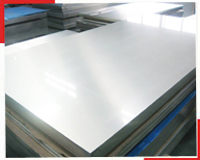 These steels are the second most regularly specified stainless steels after Type 321 and are part of the SAE defined 300 Series which encompasses a range of austenitic chromium-nickel alloys. Austenitic stainless steels like Type 321 are widely available, have good general corrosion resistance, good cryogenic toughness, and excellent formability and weld ability. These steels are the second most regularly specified stainless steels after Type 321 and are part of the SAE defined 300 Series which encompasses a range of austenitic chromium-nickel alloys. Austenitic stainless steels like Type 321 are widely available, have good general corrosion resistance, good cryogenic toughness, and excellent formability and weld ability.
Type 321 has 2-3% Molybdenum included in its chemical composition which prevents specific forms of corrosion and generally enhances its corrosion resistance. Type 321 is often referred to as “marine grade” stainless due to its increased resistance to chloride corrosion compared to Type321 making it a very suitable material for use in salt water environments. Type 321L is a variant of Type 321 and differs by having a lower Carbon content as well as slightly lower yield and tensile strengths. Type 321L offers improved weldability and also reduces the possibility of lower corrosion resistance around welded areas.
As with most steel plate products a number of different designations are used for these steels. The most common are:
- Type 321 1.4401 (EN Steel Number) S 32100 (UNS)
- Type 321L1.4404 (EN Steel Number) S 32103 (UNS)
321 /321L Stainless Steel Properties:
Typical chemical and mechanical properties of Type 321 and Type 321L steel:
|
|
Chemical Analysis (%) |
PREN |
Mechanical Properties |
|
|
C |
Cr |
Ni |
Mo |
|
Proof Stress |
Tensile |
Elongation |
|
321 |
.08 |
17 |
11.5 |
- |
24 |
255 |
550-700 |
40 |
|
321L |
.03 |
17 |
11.5 |
- |
24 |
220 |
520-670 |
40 |
Typical industrial sectors:
- Brewing
- Chemical Industry
- Dairy
- Food processing
- Marine equipment
- Petrochemicals
- Pharmaceuticals
Typical product applications:
- Condensers
- Heat Exchangers
- Filters
- Pressure Vessels
- Valves
- Flanges and Fittings
317L Stainless Steel Plates
Grade 317 L / 317 LL | UNS S317 L00 / UNS S317 L03 | 1.4401 / 1.4404
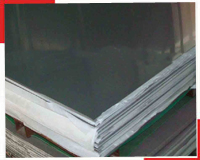 These steels are the second most regularly specified stainless steels after Type 317 L and are part of the SAE defined 300 Series which encompasses a range of austenitic chromium-nickel alloys. Austenitic stainless steels like Type 317 L are widely available, have good general corrosion resistance, good cryogenic toughness, and excellent formability and weldability. These steels are the second most regularly specified stainless steels after Type 317 L and are part of the SAE defined 300 Series which encompasses a range of austenitic chromium-nickel alloys. Austenitic stainless steels like Type 317 L are widely available, have good general corrosion resistance, good cryogenic toughness, and excellent formability and weldability.
Type 317 L has 2-3% Molybdenum included in its chemical composition which prevents specific forms of corrosion and generally enhances its corrosion resistance. Type 317 L is often referred to as “marine grade” stainless due to its increased resistance to chloride corrosion compared to Type 317 L making it a very suitable material for use in salt water environments.
Type 317 LL is a variant of Type 317 L and differs by having a lower Carbon content as well as slightly lower yield and tensile strengths. Type 317 LL offers improved weldability and also reduces the possibility of lower corrosion resistance around welded areas.
As with most steel plate products a number of different designations are used for these steels. The most common are:
- Type 317 L 1.4401 (EN Steel Number) S317 L00 (UNS)
- Type 317 LL1.4404 (EN Steel Number) S317 L03 (UNS)
317 L / 317 LL Stainless Steel Properties:
Typical chemical and mechanical properties of Type 317 L and Type 317 LL steel:
|
|
Chemical Analysis (%) |
PREN |
Mechanical Properties |
|
|
C |
Cr |
Ni |
Mo |
|
Proof Stress |
Tensile |
Elongation |
317 L |
.08 |
17 |
11.5 |
- |
24 |
255 |
550-700 |
40 |
317 LL |
.03 |
17 |
11.5 |
- |
24 |
220 |
520-670 |
40 |
Typical industrial sectors:
- Brewing
- Chemical Industry
- Dairy
- Food processing
- Marine equipment
- Petrochemicals
- Pharmaceuticals
Typical product applications:
- Condensers
- Heat Exchangers
- Filters
- Pressure Vessels
- Valves
- Flanges and Fittings
310 S Stainless Steel Plates
Grade 310S / 310SL | UNS S310S00 / UNS S310S03 | 1.4401 / 1.4404
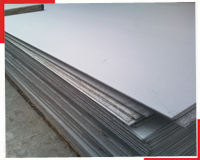 These steels are the second most regularly specified stainless steels after Type 310S and are part of the SAE defined 300 Series which encompasses a range of austenitic chromium-nickel alloys. Austenitic stainless steels like Type 310S are widely available, have good general corrosion resistance, good cryogenic toughness, and excellent formability and weldability. These steels are the second most regularly specified stainless steels after Type 310S and are part of the SAE defined 300 Series which encompasses a range of austenitic chromium-nickel alloys. Austenitic stainless steels like Type 310S are widely available, have good general corrosion resistance, good cryogenic toughness, and excellent formability and weldability.
Type 310S has 2-3% Molybdenum included in its chemical composition which prevents specific forms of corrosion and generally enhances its corrosion resistance. Type 310S is often referred to as “marine grade” stainless due to its increased resistance to chloride corrosion compared to Type 310S making it a very suitable material for use in salt water environments.
Type 310SL is a variant of Type 310S and differs by having a lower Carbon content as well as slightly lower yield and tensile strengths. Type 310SL offers improved weldability and also reduces the possibility of lower corrosion resistance around welded areas.
As with most steel plate products a number of different designations are used for these steels. The most common are:
- Type 310S 1.4401 (EN Steel Number) S310S00 (UNS)
- Type 310SL1.4404 (EN Steel Number) S310S03 (UNS)
310S / 310SL Stainless Steel Properties:
Typical chemical and mechanical properties of Type 310S and Type 310SL steel:
|
|
Chemical Analysis (%) |
PREN |
Mechanical Properties |
|
|
C |
Cr |
Ni |
Mo |
|
Proof Stress |
Tensile |
Elongation |
310S |
.08 |
17 |
11.5 |
- |
24 |
255 |
550-700 |
40 |
310SL |
.03 |
17 |
11.5 |
- |
24 |
220 |
520-670 |
40 |
Typical industrial sectors:
- Brewing
- Chemical Industry
- Dairy
- Food processing
- Marine equipment
- Petrochemicals
- Pharmaceuticals
Typical product applications:
- Condensers
- Heat Exchangers
- Filters
- Pressure Vessels
- Valves
- Flanges and Fittings
347 Stainless Steel Plates
Grade 347 / 347L | UNS S34700 / UNS S34703 | 1.4401 / 1.4404
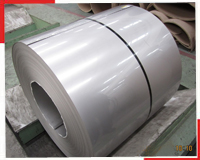 These steels are the second most regularly specified stainless steels after Type 347 and are part of the SAE defined 300 Series which encompasses a range of austenitic chromium-nickel alloys. Austenitic stainless steels like Type 347 are widely available, have good general corrosion resistance, good cryogenic toughness, and excellent formability and weldability. These steels are the second most regularly specified stainless steels after Type 347 and are part of the SAE defined 300 Series which encompasses a range of austenitic chromium-nickel alloys. Austenitic stainless steels like Type 347 are widely available, have good general corrosion resistance, good cryogenic toughness, and excellent formability and weldability.
Type 347 has 2-3% Molybdenum included in its chemical composition which prevents specific forms of corrosion and generally enhances its corrosion resistance. Type 347 is often referred to as “marine grade” stainless due to its increased resistance to chloride corrosion compared to Type 347 making it a very suitable material for use in salt water environments.
Type 347L is a variant of Type 347 and differs by having a lower Carbon content as well as slightly lower yield and tensile strengths. Type 347L offers improved weldability and also reduces the possibility of lower corrosion resistance around welded areas.
As with most steel plate products a number of different designations are used for these steels. The most common are:
- Type 347 1.4401 (EN Steel Number) S34700 (UNS)
- Type 347L1.4404 (EN Steel Number) S34703 (UNS)
347 / 347L Stainless Steel Properties:
Typical chemical and mechanical properties of Type 347 and Type 347L steel:
|
|
Chemical Analysis (%) |
PREN |
Mechanical Properties |
|
|
C |
Cr |
Ni |
Mo |
|
Proof Stress |
Tensile |
Elongation |
347 |
.08 |
17 |
11.5 |
- |
24 |
255 |
550-700 |
40 |
347L |
.03 |
17 |
11.5 |
- |
24 |
220 |
520-670 |
40 |
Typical industrial sectors:
- Brewing
- Chemical Industry
- Dairy
- Food processing
- Marine equipment
- Petrochemicals
- Pharmaceuticals
Typical product applications:
- Condensers
- Heat Exchangers
- Filters
- Pressure Vessels
- Valves
- Flanges and Fittings
|